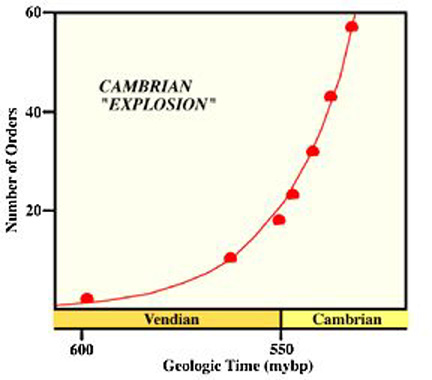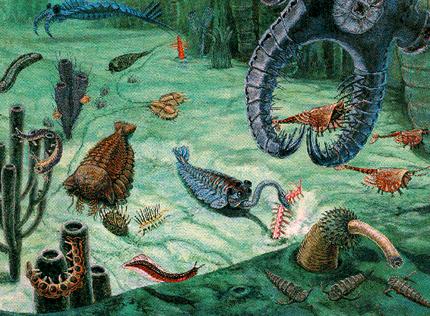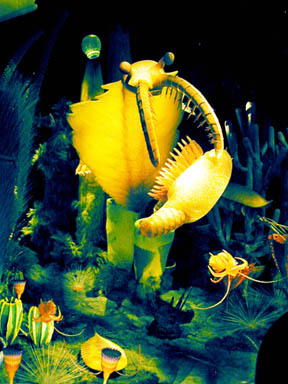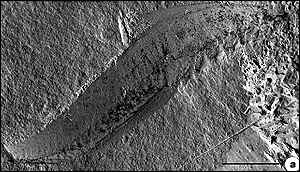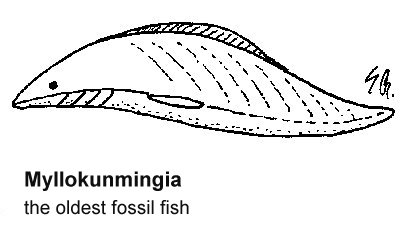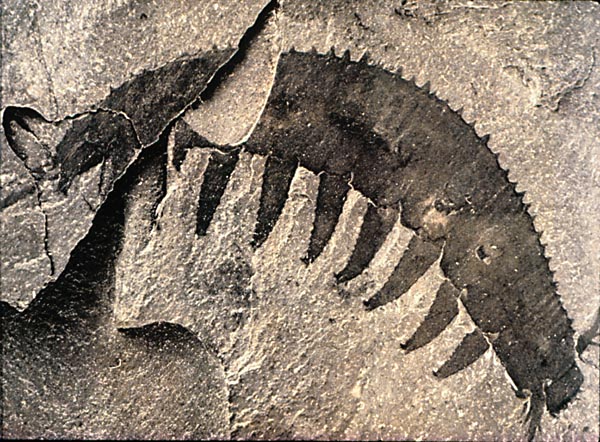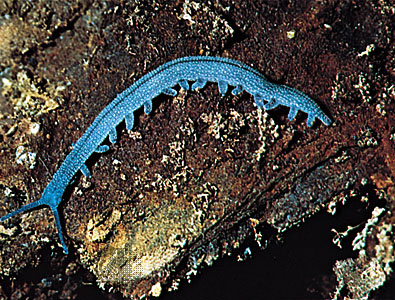Source: http://ircamera.as.arizona.edu/NatSci102/NatSci102/lectures/lifeadvanced.htm
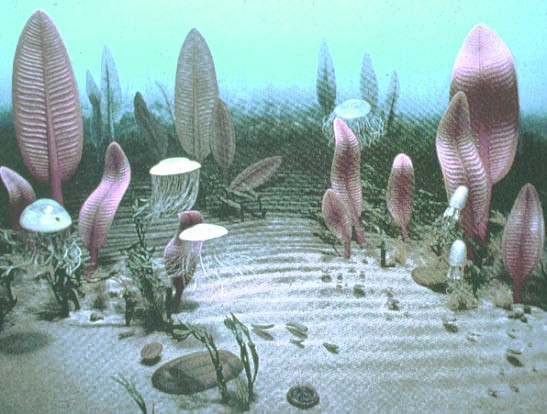 |
Plants
and a few forms of simple animals began to evolve. from Rick
Miller, http://www-rohan.sdsu.edu/~rhmiller/fossil_record/ediac4.htmSome fossils from this era are below
(with centimeter rules for scale), from G. M. Narbonne, Queens Univ.,
Newfoundland, Canada 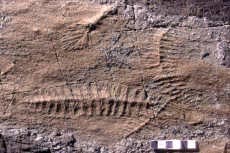
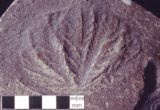 Fossils from Mistaken Point,
Newfoundland Fossils from Mistaken Point,
Newfoundland
|
These plants and animals were built by making a series of slightly modified copies
of a small number of biological designs. This type of construction was another huge
advance, and remains the way plants and animals develop today. The development process is
controlled by biological "switches" that regulate the way large numbers of cells
grow and organize themselves. As a result, evolution could proceed - a change in a switch
is sufficient to produce a coherent, new form of organism.
Compare these two re-creations of the Cambrian sea floor below
with the one above for the Vendian/Ediacaran era. Both Cambrian reconstructions are
dominated by the super-predator anomalocaris, but with a huge variety of other animal
types. For the first time, predators hunted other animals that protected themselves with
shells, spines, and other devices. (Nat. Mus. Mat. Hist., http://www.nmnh.si.edu/paleo/shale/pamsci.htm;
Royal Tyrrell Museum, picture by M. Rieke)
| Reconstruction of anomalocaris, the dominant predator that grew up to
two feet in length |
This awesome hunter (4 - 6 times larger than any other animal) swam
the seas searching for food, which it captured with its claws and pulled into a round
mouth lined with teeth. animation from D. Quinn, Paleoindustrial, http://www.paleoindustrial.com/Anomalocaris%20-%20Swimming.htm. |
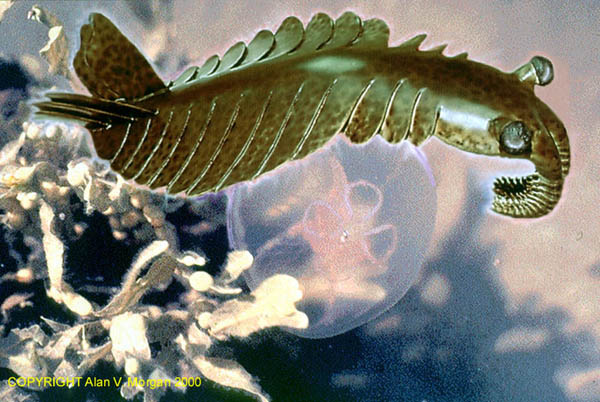 |
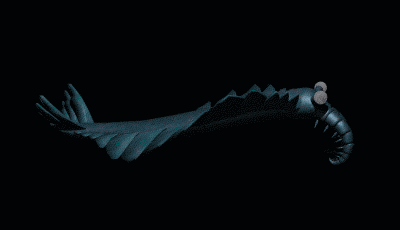 |
These specimens of other creatures (typically a few inches long) are based on
fossils from the Burgess Shale, in the Canadian Rockies on the border between British
Columbia and Alberta.
Wiwaxia |
Opabinia |
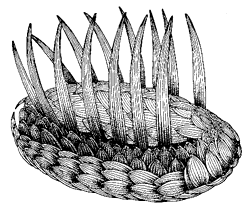
|
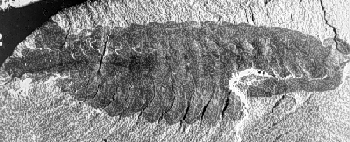 |
Halucenia |
Trilobite |
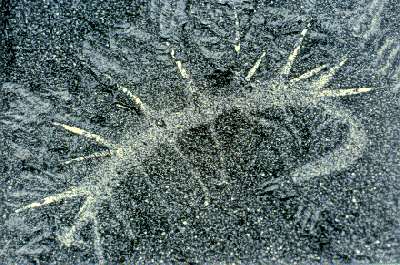 |
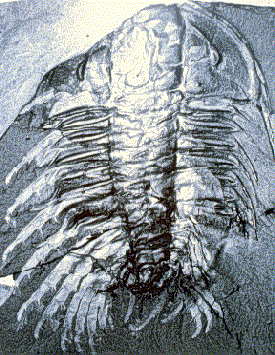 |
The Cambrian era ended with a mass extinction, for which we are unsure of the
cause.


 Fossils from Mistaken Point,
Newfoundland
Fossils from Mistaken Point,
Newfoundland